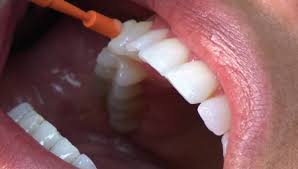By Dr. Jeremy B. Jorgenson
Have you ever wondered why you need x-rays taken at the dentist? Although dentists are heroes, they don’t have x-ray vision. Dentists can identify areas of concern on the visible surfaces of the teeth, but a dental x-ray is necessary to see what is going on underneath the surface, in-between teeth, and at the root. Dentists can learn a lot of valuable information about the history of your teeth and the current state of your mouth by taking dental x-rays.
Different Types of Dental X-Rays
Your dentist will generally perform a set of Full Mouth x-rays (FMX) on your first visit, every few years, or if you experience any significant health changes. A set of Full Mouth x-rays takes images of all upper and lower teeth. More often, your dentist will take Bitewing and Periapical x-rays. Bitewing x-rays can be taken of both upper and lower teeth and are focused on just the crown of a tooth. A Bitewing x-ray can detect cavities or changes in bone density. Periapical x-rays can be taken of any tooth, but generally only show one to two teeth at a time and include the root to the crown of the tooth.
Panoramic x-rays are a type of extraoral (outside of the mouth) images. They take a picture of the entire mouth structure in a single photo. Ask your dentist for more information on other types of x-rays.
At Advanced Dental Care, we use digital x-rays which emit about half the radiation of traditional film x-rays. Digital X-Rays work by placing a rectangular sensor in the mouth that acts as a backdrop for the image of the tooth. The images are generated right into your chart and can be viewed instantly!
Occasionally, a patient will have questions about the safety of taking dental x-rays. The American Dental Association works very closely with the FDA on radiation safety. Digital x-rays combined with trained professionals and equipment monitoring provide for minimal doses of radiation exposure which have been found to be completely safe.
Digital x-rays have been a great technological advancement for the dental field. Ask your dentist to show you your crowns and roots at your next dental visit!




